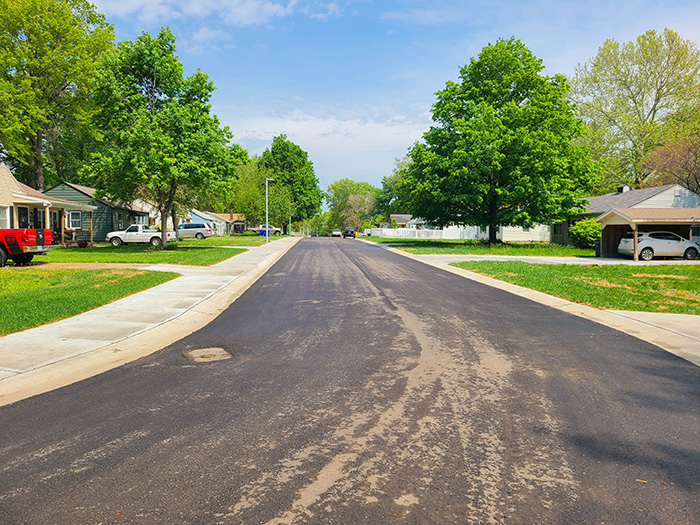Olathe Tackles Neighborhood Improvements Near Superfund Site
Posted on Tuesday, April 9th, 2024 by Affinis CorpIn Roadway, tagged in

As part of the 2022 Street Reconstruction Program, the City of Olathe, Kansas chose to invest in the Highland Park Neighborhood by replacing deteriorated infrastructure that was beyond maintenance or preservation conditions. Located within the city’s Neighborhood Revitalization Area of historic Original Town, the neighborhood had deteriorated pavement, limited street lighting, and a deficient storm drainage system, as well as no sidewalk.
The City of Olathe selected Affinis to provide survey and design services for the improvements in the Highland Park Neighborhood. The streets were completely reconstructed to provide a new roadway service life. A sidewalk was added, and an LED street lighting system was installed to promote pedestrian connectivity and safety.
The condition and capacity of the existing storm sewer system was analyzed as well. Corrugated metal pipe and block inlets were replaced with concrete structures and pipe. Additional collection point and larger diameter pipes were installed to reduce street flooding and improve system capacity to current standards. Due to conflicts with the new storm sewer, water main and service replacements were completed in part of the neighborhood.
Finally, full pavement replacement throughout the project site provided an opportunity to rehabilitate sanitary sewer main and services within the neighborhood. However, the subsurface utility work posed a unique challenge given the project’s proximity to an EPA Superfund site. The presence of contaminated groundwater and soil within the project area required a comprehensive approach to handling these materials, if encountered during construction. Health and safety of the residents and workers was the top priority.
The design team worked with the owner of the Superfund site, the Environmental Protection Agency (EPA), and the Kansas Department of Health and Environment (KDHE) to identify necessary permits and develop a project specification to outline safety requirements and procedures for contractor personnel for the handling and disposal of contaminated materials. Groundwater and soil samples were taken in advance of construction activities to determine current levels of contamination, which aided in developing the requirements. In addition, underground work was delayed until late in the summer when the groundwater table would be lowest.

Completed in 2023, these improvements will be the catalyst for property owner investment and move the neighborhood forward through the next 50 years.